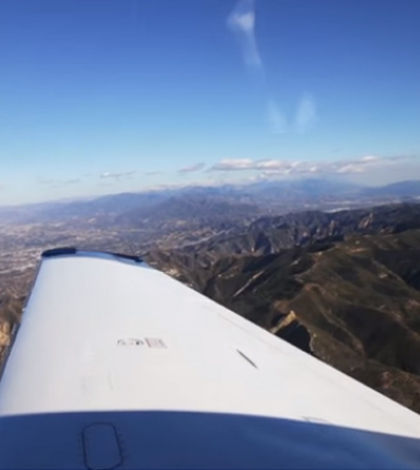Los Angeles Gas Well Blowout Was Largest Methane Leak In U.S. History

UC Davis scientist and pilot Stephen Conley flies over Aliso Canyon to measure methane from nearby natural gas storage facility. (Credit: Joe Proudman / UC Davis)
The large gas well blowout that began near Los Angeles in late 2015 and continued through February of the following year released more than 100,000 tons of methane into the atmosphere, according to a release from the University of California, Davis. The total means that the leak was the largest in the history of the United States and will very likely impact California’s greenhouse gas reduction targets this year.
Researchers at the university joined with officials at the California Energy Commission to complete a series of 13 flights over the plume during the 112-day event. The plane they used was equipped with sensors for measuring methane and ethane, both components of the natural gas being released. Scientists also collected discrete samples of the air around the area for analysis back in the lab.
Not only do the data gathered help in quantifying just how large the leak was, but they also will help in calibrating remote sensors deployed on satellites that track emission of gases like methane. The investigation also revealed a slew of other compounds present in the gas well’s emissions, including benzene, butanes and pentanes.
Full results of the airborne surveys have been published in the journal Science.
Top image: UC Davis scientist and pilot Stephen Conley flies over Aliso Canyon to measure methane from nearby natural gas storage facility. (Credit: Joe Proudman / UC Davis)




0 comments